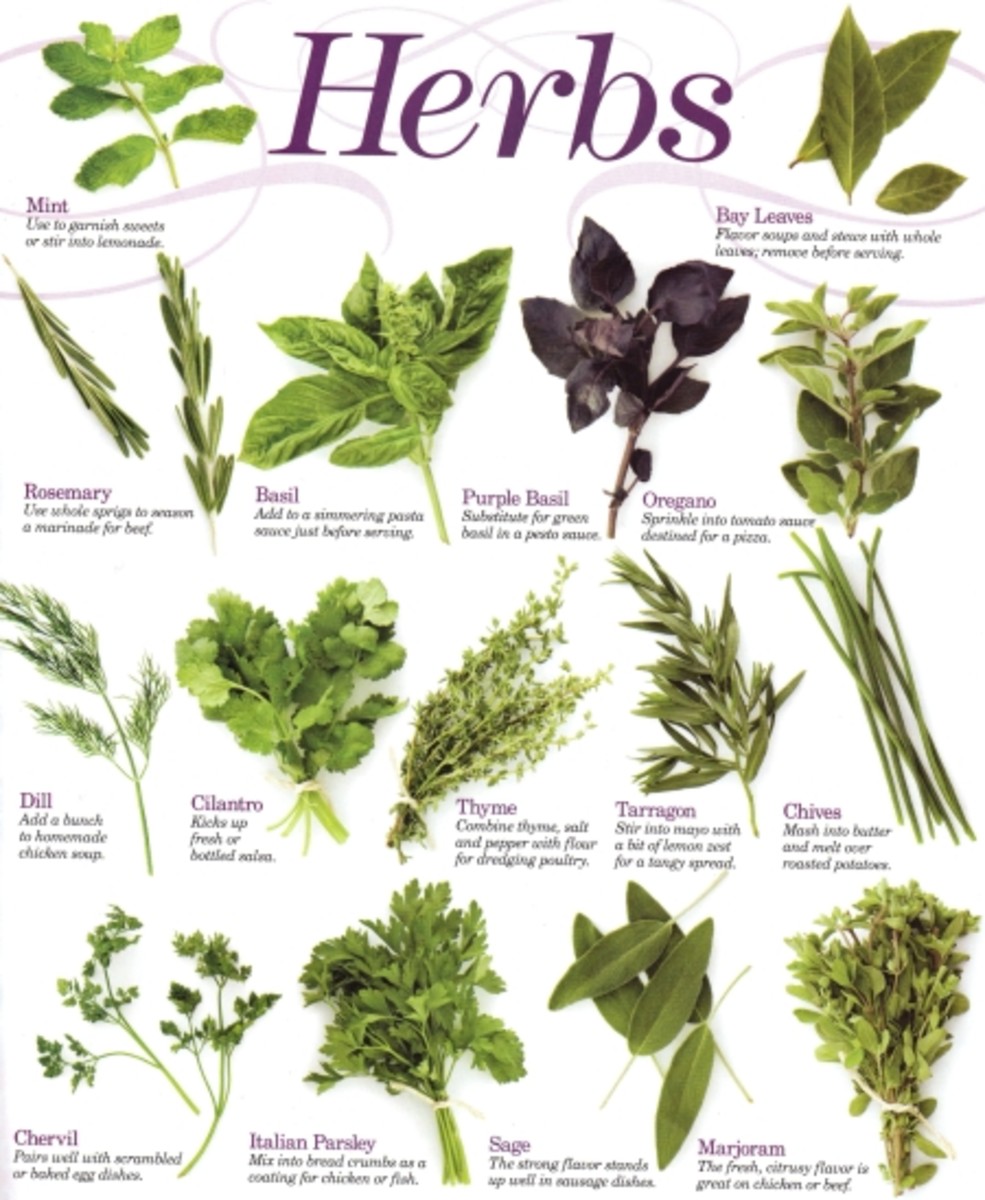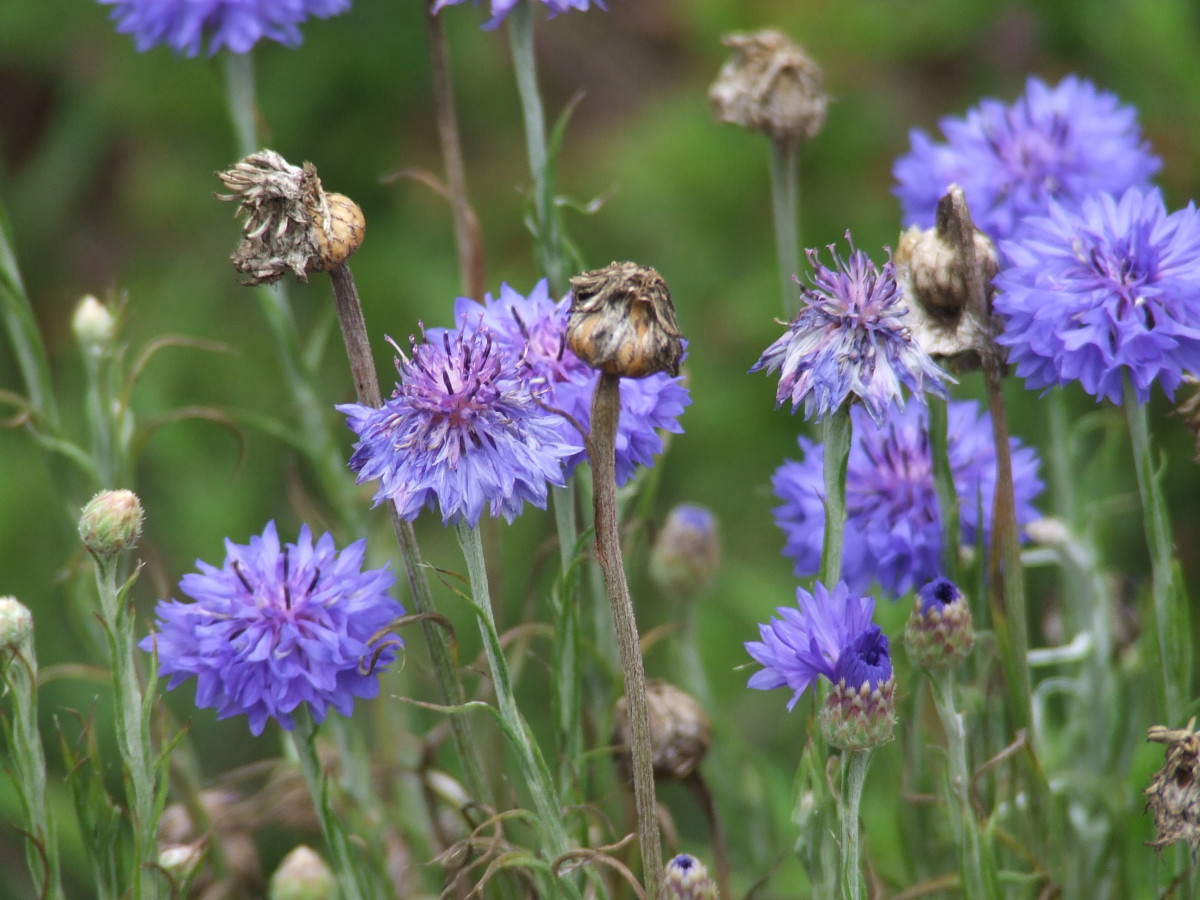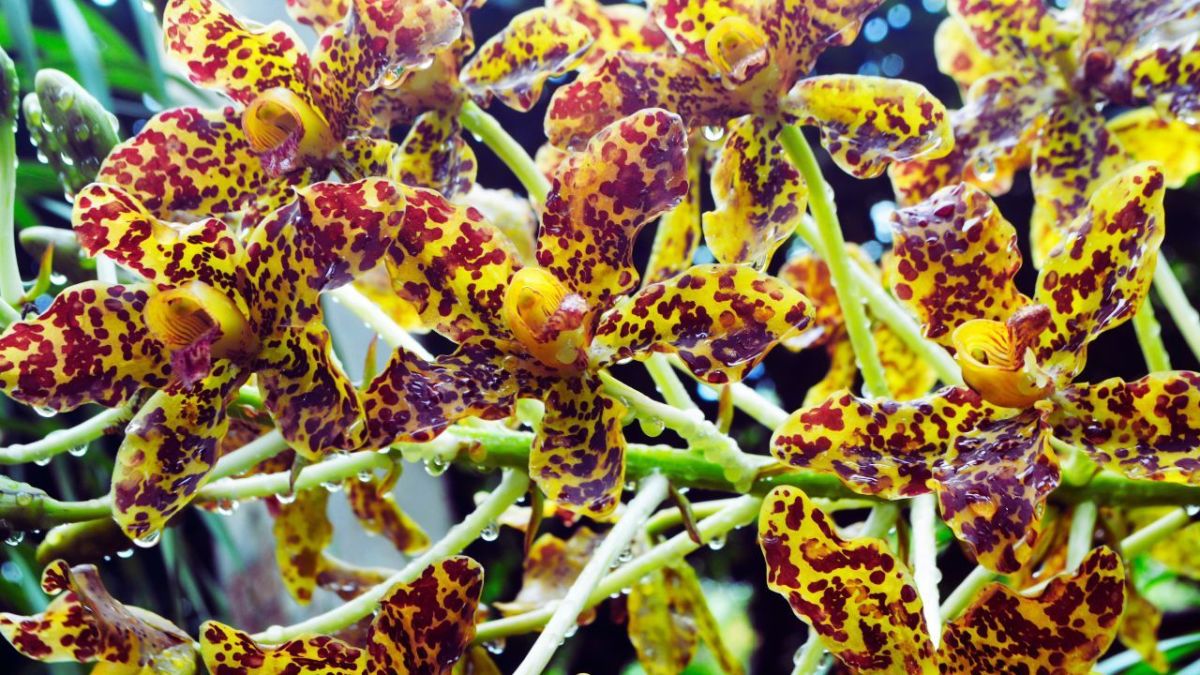Seven Essential Kitchen Garden Herbs
Historically, herbs have been used as remedies for illnesses, flavoring, storing with linens, strewing on floors, or burning for their pleasant fragrances. Some were used to improve the taste of meats in the days before preservation techniques were developed. Other herbs were used to dye homespun fabrics.
Early herb gardens were the major source for food seasoning. The need for homegrown herbs, however, declined with more modern preservation techniques, and the proliferation of modern shops. Today, many gardeners are rediscovering the joy and pleasure of producing their own herbs. Herb gardens, almost an essential feature for cooking aficionados, can be placed in sunny corners near the house to be readily available to the cook.
Culinary herbs are probably the most useful to herb gardeners, having a wide range of uses in cooking. The seven herbs I consider essential to any kitchen herb garden are oregano, thyme, basil, rosemary, parsley, chives and sage.
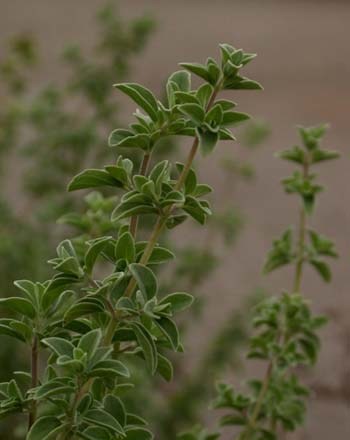
Oregano
Oregano, also called "wild marjoram," is a hardy perennial that has sprawling stems which can grow to 2 feet tall. The stems will often root where they lie on the soil. This plant is much coarser than sweet marjoram and smells more like thyme. It has small pink, purple or white flowers.
Oregano grows well in poor soil and can be propagated by seed or division. Thin plants 10 to 12 inches apart. Stimulate foliage by cutting back flowers. Replant when the plants become woody in 3 to 4 years. Use fresh leaves as needed. Oregano leaves are used extensively as a flavoring on pizza. Sprinkle leaves over lamb or steak rubbed with lemon juice. Add to other Italian-type sauces. Chop fresh leaves into potato salad. Preserve oregano leaves by drying.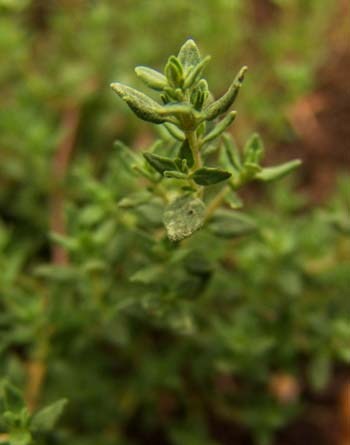
Thyme
Thyme is a low-growing, wiry-stemmed perennial that reaches about 6 to 10 inches in height. The stems are stiff and woody and leaves are small, oval, and gray-green in color. The lilac flowers are borne in small clusters and the leaves are very aromatic. There are several varieties of ornamental thymes, as well as culinary ones.
This plant grows best in light, well-drained soil. Thin the plants 8 to 12 inches apart. It is best to renew the plants every few years. Propagate with cuttings, divisions, or by direct seeding. Thyme is an attractive edging plant. Spreading varieties are used for ground cover among and over rocks.Cut the leafy tops and flower clusters when first blossoms open and dry, or use the fresh leaves. Thyme retains its flavor well when dried. It goes well in gumbos, bouillabaisse, clam chowder, poultry stuffings, and slow-cooking beef dishes. Oil of thyme is used in medicines and perfumes.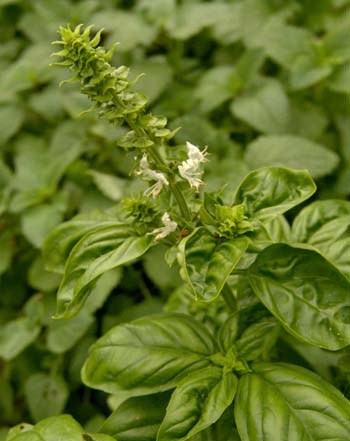
Basil
Basil is a tender annual, about 18 inches tall with light-green, fairly broad leaves. The flowers are small, white, and appear in spikes. There are several species of cultivated basil, one having purple leaves. Basil grows easily from seed planted after all danger of frost has passed. Pinch the stems to promote bushy, compact growth. Avoid using much fertilizer, as lush growth may reduce the flavor.
The green leaves can be picked for use in cooking about 6 weeks following planting. Spicy-scented basil leaves are one of the most popular of all herbs used in cooking. Cooks favor basil for tomato and pasta dishes in either fresh or dried form.
For winter use, you can dry basil. It is best to cut leaves for drying just before flowers open. I prefer to freeze it, as the flavor retention is much greater. Another way to keep it for winter use is to make basil pesto, and freeze the pesto in small quantities (I put it into an ice cube tray).
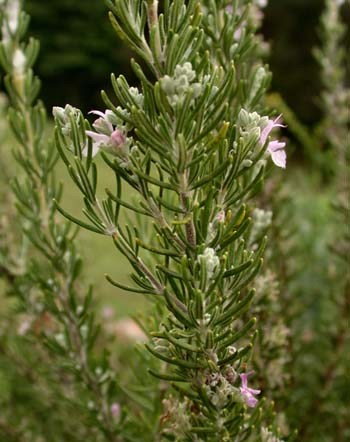
Rosemary
Rosemary is a hardy evergreen shrub in areas where winter temperatures stay above 5 degrees Farenheit. In the Northeast, however, this perennial should be taken indoors and kept as a pot plant during winter. The narrow leaves have a leather-like feel and a spicy, resinous fragrance.
Rosemary grows best in well-drained, sunny locations in lime-rich soil. It can be propagated by cuttings or grown from seed. Pinch the tips to direct growth.Use fresh leaves as needed. In areas where rosemary can't winter over, cut branches and freeze them for use. Rosemary can be dried, but is much more flavorful fresh or frozen. Rosemary is a popular flavoring for meats and dressings, in stews or as a garnish on large roasts. The leaves can finely chopped and added to biscuit or bread dough for a flavorful bread. Oil from leaves is used in medicine.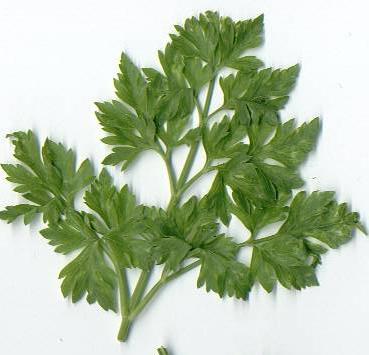
Parsley
Parsley is a hardy biennial that is usually treated as an annual. It is popular because of its much-divided, curly leaves which have a characteristic flavor and smell. Italian parsley is similar, with flat leaves and a more distinctive taste.Parsley grows easily from seed, but is difficult to transplant because of its long taproot.
Cut parsley when the leaves are of suitable size. The leaves are best used fresh, but can be dried. Parsley is one of the most familiar of all herbs and is used for both garnishing and flavoring. It is a good addition to tomato salads, potato salad, and leafy green salads. If used in cooking, add it just before serving. It is relatively high in vitamins A and C and iron.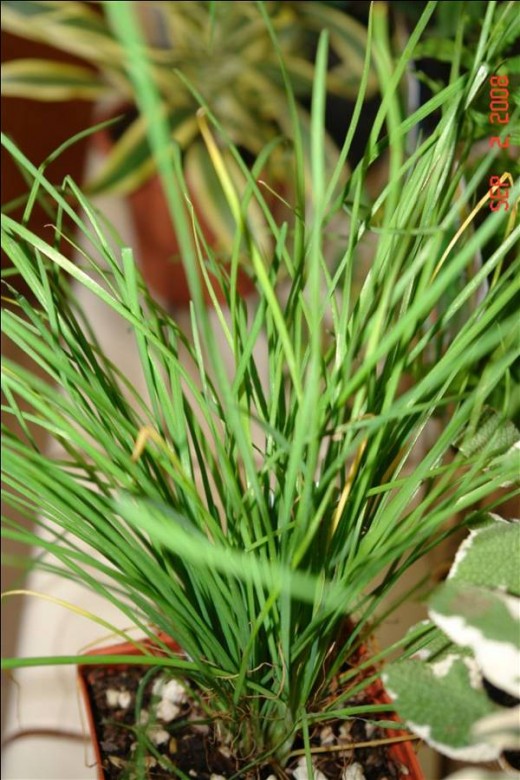
Chives
Chives are small, dainty, onion-like plants that grow in clumps reaching about 10 inches in height. They are a hardy perennial with decorative, light purple flowers. Often one of the first to show green shoots in spring, chives demand little care other than dividing when they become overcrowded. They are easily propagated by division or from seed and make attractive border plants.
Cut fresh leaves for use as they grow. Use the purple flower heads in salads. For winter use, chives can be dried, but retain better flavor if frozen. Chives are used to impart a delicious, subtle, onion-like flavor to foods. Use them in omelets, potato salads, and as a garnish cottage cheese.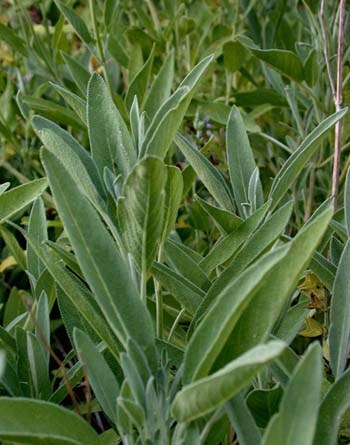
Sage
Sage is a woody, hardy perennial plant with oblong, wooly, gray-green leaves that are lighter underneath and darker on top. Sage grows 2 to 3 feet or more in height and has a tendency to sprawl. There are several varieties available, with purple leaves, variegated leaves or green leaves. Some varieties have attractive deep blue flowers.
Start sage from seed or cuttings. A slow starter, sow seed indoors and transplant. Plant sage where it will receive full sun and space 2 feet apart. Plants eventually become woody and should be renewed every 3 to 4 years.Pick the leaves before or at blooming. Cut back the stems after blooming. Leaves can be dried or used fresh. This aromatic and slightly bitter herb is noted for its use in stuffings for poultry, rabbit, pork, and baked fish. It also can be used in sausage or meat loaves.



